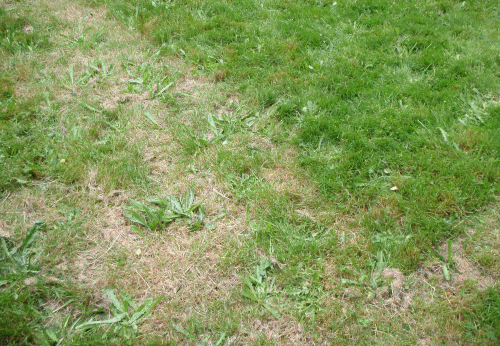



John C Robinson wrote:I have a Ryobi battery operated mower.
I have been mowing at the highest setting, but the grass gets matted down and often looks like a deer has been bedding on it, or something. Also, I have to cross-cut at least twice to try to hit the grass from all angles. It does not "stand-up" well to be cut. I cut the grass about every 4 days at this time of year. It's necessary to cut at least that often to keep within the 1/3 rule.
The issue shouldn't be lack of water. The grass received 1" of water about 3 days ago. The grass is a mixture of KBG, fescue, rye, and white clover. The crab grass hasn't shown up yet.
I have read about tall fescue. I'd rather deal with what is here than start over with something else. I have gypsumed and limed. The pH was 5.1, so the liming is going to be a year long process, at least.
I haven't put a ruler to the wheels of the mower, but I assume it's about 3 1/2 to 4". Is it possible that the battery operated mower doenst have the suction to stand the grass up for cutting? Am I just keeping it too long?



Cherrie Ward wrote:I just read your online piece about organic lawn care for the cheap and lazy (that's me!). What is the role of thatching and aerating (removing plugs)? Also, I have a growing circle of white clover...it's nearly July...do I just let it be and then focus on some organic fertilizer in the fall and spring? Anything that will help reduce it now? I know, I know...you've been suggesting people ADD these to their lawn, but *ducks for cover*, I rather just like the look of lawn, lawn, and the bees in the clover are an issue for going barefoot (I have plenty of other places for bees).
Weeds
Soil solarization controls many of the annual and perennial weeds present in California. While some weed species seeds or plant parts are very sensitive to soil solarization, others are moderately resistant and require optimum conditions for control (good soil moisture, tight-fitting plastic, and high solar radiation). Solarization generally does not control perennial weeds as well as annual weeds because perennials often have deeply buried underground vegetative structures such as roots and rhizomes that may resprout. Rhizomes of bermudagrass and johnsongrass may be controlled by solarization if they are not deeply buried. Solarization alone is not effective for the control of the rhizomes of field bindweed. Control of purple and yellow nutsedge, as well as field bindweed arising from rhizomes and some clovers, can be inconsistent, even under favorable conditions.




 . Usually these things are done during the time the grass is growing, which in your climate might be from late spring to mid autumn.
. Usually these things are done during the time the grass is growing, which in your climate might be from late spring to mid autumn.